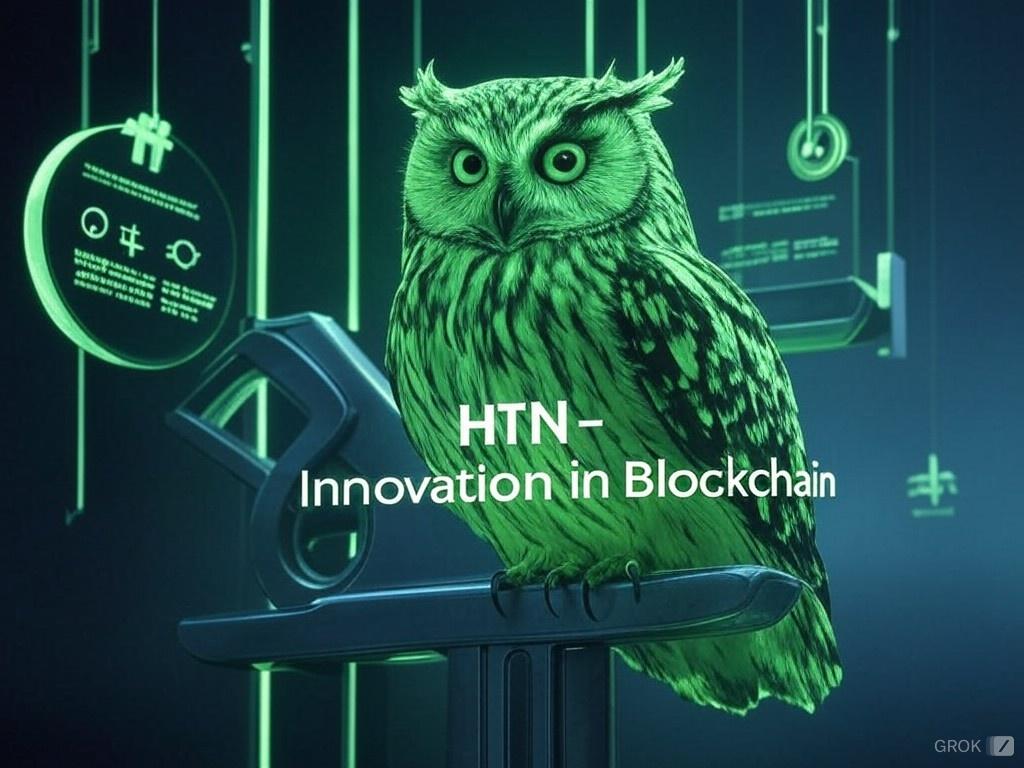
PoW Systems Against Quantum Threats with Hoosat Network’s Innovative Solution
PORI, Finland, January 2nd, 2025, Chainwire
As the quantum computing revolution accelerates, the security of Proof-of-Work (PoW) cryptocurrencies faces unprecedented challenges. Hoosat Network is proud to announce a groundbreaking, patent-pending solution against brute-forcing of proof of work designed by lead developer Tonto, aimed at safeguarding PoW systems from threats posed by advanced computational capabilities, including quantum machines.
The Quantum Challenge to PoW Cryptocurrencies
Quantum computing is advancing at a rapid pace, with technologies such as Google’s Willow processor and the implementation of Grover’s algorithm raising the stakes for cryptographic security. Grover’s algorithm, in particular, poses a unique threat by enabling quantum machines to brute-force cryptographic keys significantly faster than classical computers. The problem is bigger for Proof of Work, because of the nonce-based validation systems used in PoW cryptocurrencies.
Bitcoin, for example, relies on two passes of the SHA-256 algorithm. While Grover’s algorithm reduces the effort required to brute-force a PoW hash from 2^256 steps to 2^128, the true vulnerability lies elsewhere: its 32-bit nonce, which can be brute-forced in just 2^16 steps using Grover’s Algorithm. This weakness creates an exploitable gap that could compromise the fairness and security of Bitcoin mining as quantum systems mature.
Hoosat Network: Pioneering the Future of PoW Security
To counteract these vulnerabilities, Hoosat Network has developed an innovative PoW enhancement that fundamentally reimagines how nonce validation is conducted. Lukkaroinen’s solution strengthens network integrity while neutralizing the quadratic speedup offered by quantum algorithms like Grover’s. The key features of this approach include:
- Comprehensive PoW Hash Validation: Miners are required to submit both PoW hashes and their corresponding nonces. The network recalculates and validates these submissions to ensure accuracy and consistency.
- Bad Actor Detection and Banning: Invalid submissions, whether intentional or accidental, are immediately flaggable. Repeat offenders can be banned from the network, preserving its integrity.
- Quantum-Resistant Brute-Forcing: By combining the PoW hash output (256 bits) with the nonce (32 bits), the effective search space expands to 2^144 for attackers utilizing Grover’s algorithm. This renders quantum brute-forcing practically infeasible, as even a single invalid submission can result in a ban.
This novel approach eliminates the security gap associated with traditional nonce-based validation systems while maintaining compatibility with existing infrastructure.
Case Study: Hoohash and Pyrinhash
Hoosat Network’s research into existing PoW mechanisms, such as Hoohash and Pyrinhash, uncovered vulnerabilities in their validation protocols. For instance, tests revealed that Pyrinhash achieved a 50% success rate in generating valid nonces for Hoohash despite using different inputs. This demonstrates how inadequate validation can compromise mining fairness and system security.
These findings underscore the urgency for stronger PoW mechanisms as quantum computing continues to evolve, pushing the limits of traditional cryptography.
The Cost of Enhanced Security: Bandwidth, Not Complexity
Critically, Hoosat’s solution does not impose unreasonable computational burdens on the network. Unlike increasing nonce size, which could double the computational effort without significantly improving security, the new system leverages modern bandwidth capabilities to enforce strict validation, a resource far more abundant now than when Bitcoin was first introduced in 2009.
Next Steps for Hoosat Network
Hoosat Network is committed to implementing this major upgrade in its open-source, GPU-mineable cryptocurrency platform. The patent pending solution will ensure that Hoosat remains secure against both classical and quantum threats. The network will freely employ this innovation while safeguarding the patent, ensuring its widespread adoption to strengthen the global cryptocurrency ecosystem.
As the industry braces for the arrival of “Q-Day,” the moment when quantum computers surpass classical systems in critical cryptographic tasks, Hoosat Network invites other blockchain developers and cryptocurrency teams to collaborate. The message is clear: if your cryptocurrency relies on nonce-based PoW validation, it’s time to prepare for the quantum era.
About Hoosat Network
Hoosat Network (HTN) is a proof-of-work cryptocurrency utilizing the GhostDAG protocol, enhancing blockchain scalability and security. It employs the Hoohash algorithm for mining, aiming for ASIC resistance and GPU accessibility. Notable features include Hoohash the very efficient novel core algorithm and real proof of work validation. HTN’s total supply caps at about 17.1 billion, with block rewards reducing annually, designed to reach zero issuance in 115 years.
For more information about Hoosat Network’s solutions and how to fortify your cryptocurrency against emerging threats, visit https://network.hoosat.fi.
